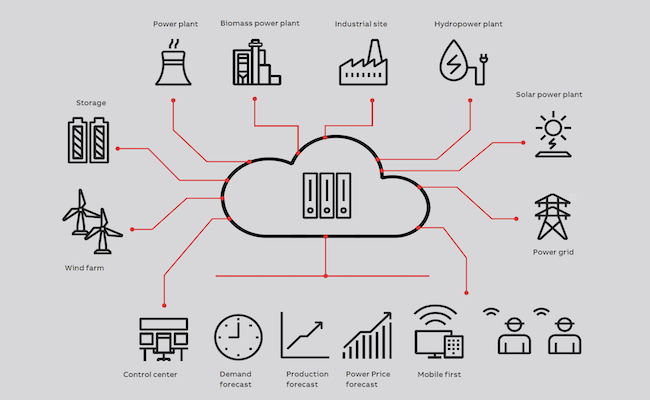Business models and market participation for virtual power plants
Virtual power plants/pools (VPP), are fast becoming a driving force in the power industry, due to rising demand for energy and the global turn to renewables.
By 2025 there will be 1 billion more people on the planet, all requiring electricity. And by 2040, 60 percent of the power generated worldwide will come from renewable sources, almost half of which will be from wind and solar photovoltaic. Much of this solar and wind power will be generated by small-scale producers – homes, businesses and municipalities.
As a result, the need is escalating for virtual power plants that combine multiple, geographically dispersed generation units into a single optimized entity that can plan and adjust production dynamically and trade intelligently on the energy market.
Together, they do more and do it better
A virtual power plant/pool is a collection of power generation sources, energy storage devices and demand-response participants located in a distributed energy system.
Almost any power generating technology can be in a VPP, including biogas, biomass, combined heat and power (CHP), micro CHP, wind, solar, hydro, power-to-heat, diesel engines and so on.
Energy storage facilities can also be incorporated into a VPP, including batteries, thermal storage, compressed air and pumped storage.
Municipalities, microgrids and industry
Typically, VPPs allow utilities and aggregators to pool production from tens, hundreds or even thousands of small and medium-sized renewable energy plants into a network that has the scale and flexibility to participate in the electricity market.
But they also serve other applications as well. They allow municipalities to optimize and manage their electricity, steam and heat production from multiple sources and participate in the electricity market.
Microgrids, which traditionally rely on costly and emission-producing diesel and gas generators, can maximize the use of renewable energy by switching to fossil fuel only when needed and in real time, should poor weather or high demand require.
Energy-intensive industries that generate their own electricity are also realizing the benefits of virtual power pools. By combining production planning, energy management and energy trading they can significantly reduce their energy costs, without changing production volumes or delivery deadlines.
And conventional multi-unit power plants can improve their flexibility, reduce fuel consumption and lower their carbon dioxide emissions by operating the plant units as a virtual power pool.
Further reading: AI enabled Plant Optimization
Fill out this form to access your free copy of “Virtual power plants” white paper written by ABB.
Contents:
- Virtual power plants – More people, more energy, more renewables
- Business models and energy trading
- The digital building blocks of a VPP
- Five use cases of power generation using VPP
- Conclusion



